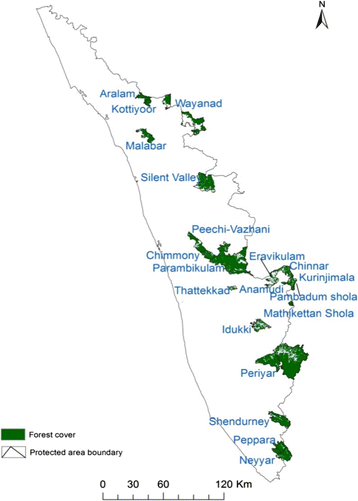Biodiversity & Environment
Eco-Sensitive Zone Around Wayanad Wildlife Sanctuary
- 10 Feb 2021
- 5 min read
Why in News
The draft notification of the Ministry of Environment, Forest, and Climate Change (MoEFCC) on an Eco-Sensitive Zone (ESZ) which runs around the Wayanad Wildlife Sanctuary (WWS) has triggered protests in Wayanad (Kerala).
Key Points
- Draft Notification:
- The 118.5 sq km area has been earmarked as an Eco-Sensitive Zone (ESZ), of which 99.5 sq km is outside the sanctuary and the remaining 19 sq km comprises revenue villages within the sanctuary.
- There will be restrictions on several human activities in ESZ, including a ban on all new and existing mining, stone quarrying and crushing units and new industries causing pollution.
- It also includes a ban on establishment of major hydroelectric projects and setting up of new sawmills, brick kilns and commercial use of firewood within ESZ.
- Besides, no new commercial hotels and resorts shall be permitted within 1km of the boundary of the protected area or up to the extent of ESZ, whichever is nearer.
- It also bars felling of trees in private lands without prior permission of the competent authority in the state government.
- Purpose of the Notification:
- It is an important step towards ensuring the safety of people around the Wildlife Sanctuary, because the lives of farmers on the forest fringes is miserable owing to the increasing incidents of wild animal attacks.
- As many as 147 persons were killed in wildlife attacks in the district in the past 38 years.
- It is an important step towards ensuring the safety of people around the Wildlife Sanctuary, because the lives of farmers on the forest fringes is miserable owing to the increasing incidents of wild animal attacks.
- Issues:
- As many as 57 enclosure villages situated inside WWS fall within the eco-sensitive zone.
- Critics have argued that the draft notification would cripple both agriculture and business sectors and will deal a blow to the district as the notification imposes curbs on vehicular traffic.
- It will badly affect the lives of thousands of farmers on the fringes of the sanctuary.
- As much as 29,291 acres of private land on the fringes of the sanctuary would come under the zone and the development of this area would stop for ever.
- Location: Located in Kerala, Wayanad Wildlife Sanctuary (WWS) is an integral part of the Nilgiri Biosphere Reserve.
- Spread over 344.44 sq km, WWS is contiguous to the tiger reserves of Nagerhole and Bandipur of Karnataka and Mudumalai of Tamil Nadu.
- Kabini river (a tributary of Cauvery river) flows through the sanctuary.
- Formation: It was declared a Sanctuary in the year 1973.
- Biodiversity:
- The forest types include South Indian Moist Deciduous forests, West coast semi-evergreen forests and plantations of teak, eucalyptus and Grewelia.
- Elephant, Gaur, Tiger, Panther, Sambar, Spotted deer, Barking deer, Wild boar, Sloth bear, Nilgiri langur, Bonnet macaque, Common langur, Wild dog, common otter, Malabar giant squirrel etc. are the major mammals.
Eco-Sensitive Zones
- Eco-Sensitive Zones or Ecologically Fragile Areas are areas within 10 kms around Protected Areas, National Parks and Wildlife Sanctuaries.
- In case of places with sensitive corridors, connectivity and ecologically important patches, crucial for landscape linkage, even areas beyond 10 km width can be included in the eco-sensitive zone.
- ESZs are notified by MoEFCC, under Environment Protection Act, 1986.
- The basic aim is to regulate certain activities around National Parks and Wildlife Sanctuaries so as to minimise the negative impacts of such activities on the fragile ecosystem encompassing the protected areas.
Way Forward
- There is a need for rethinking on the impacts of the environmental policies at the local level, the type and prospects of local participation and most importantly the prospects of alternative income generating opportunities for successful conservation initiatives.





